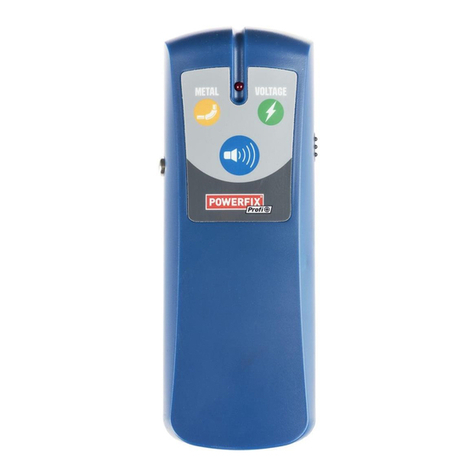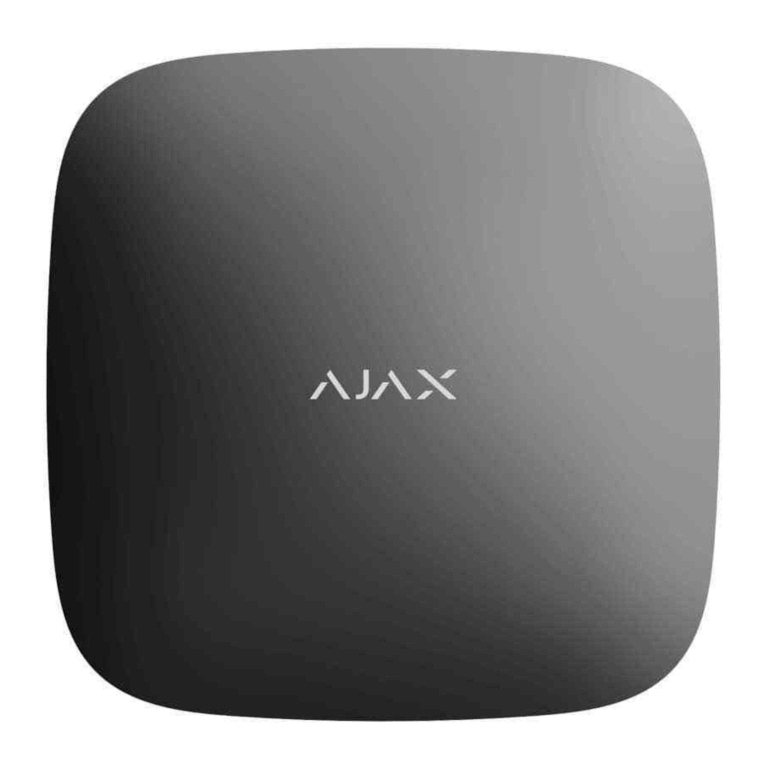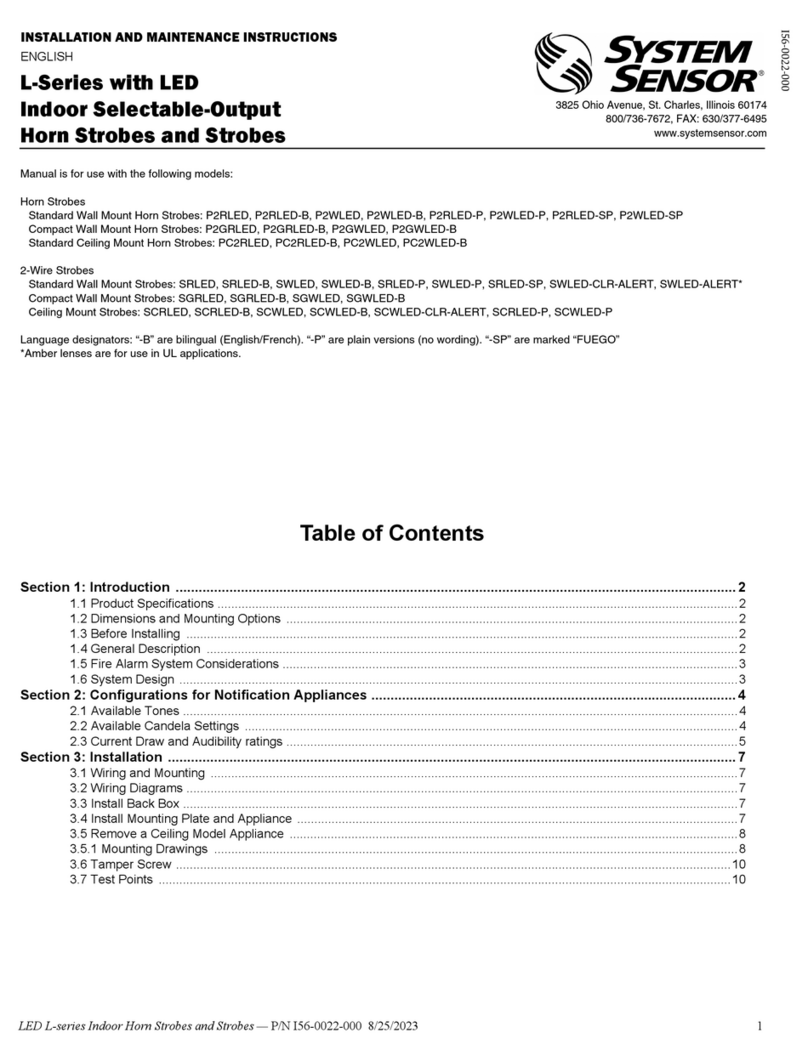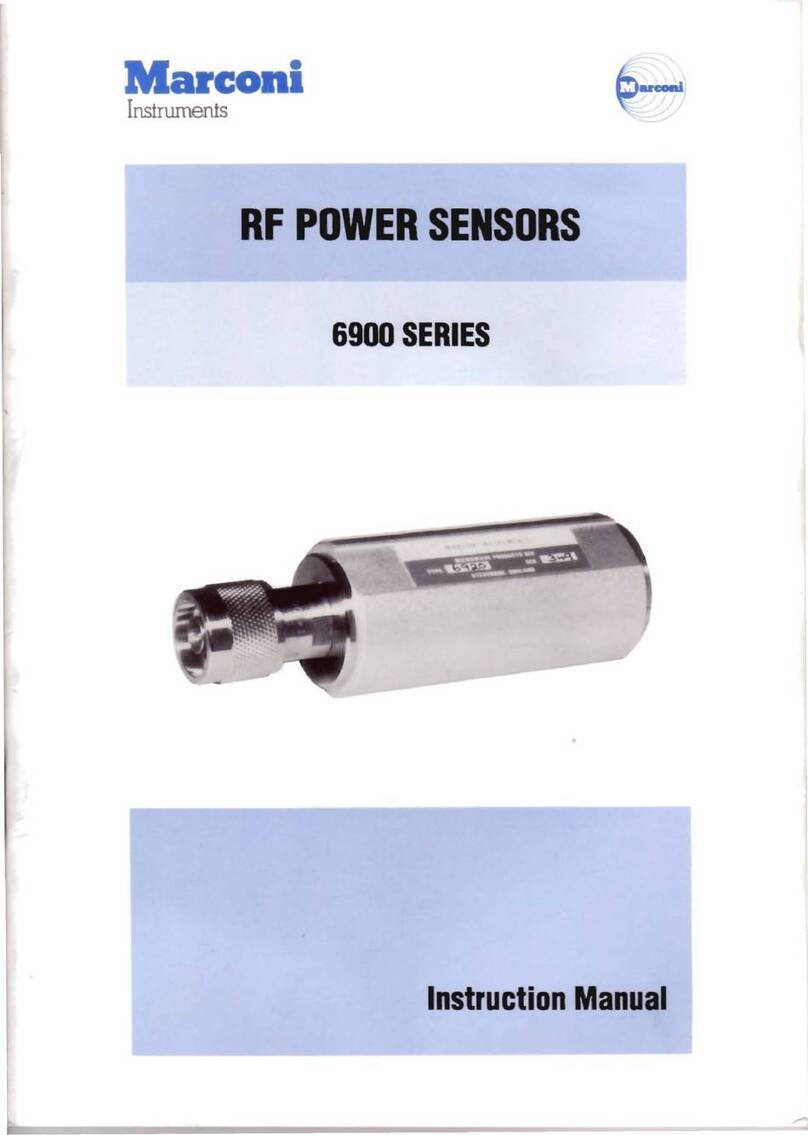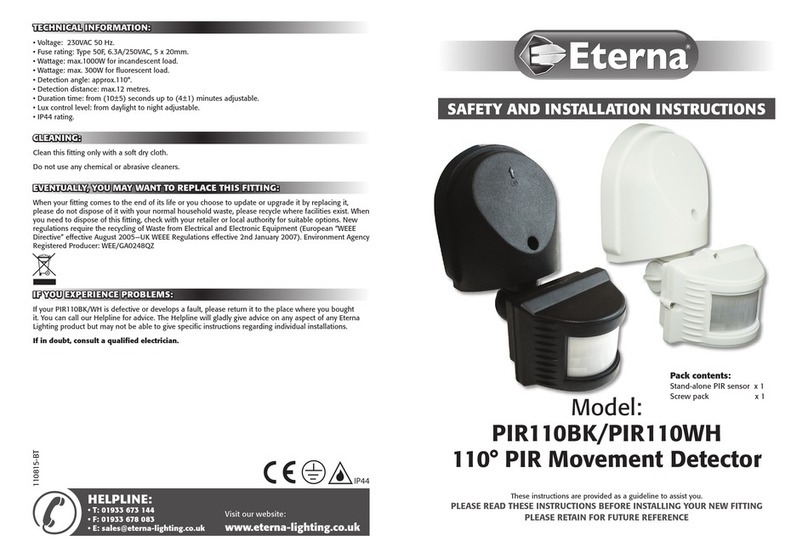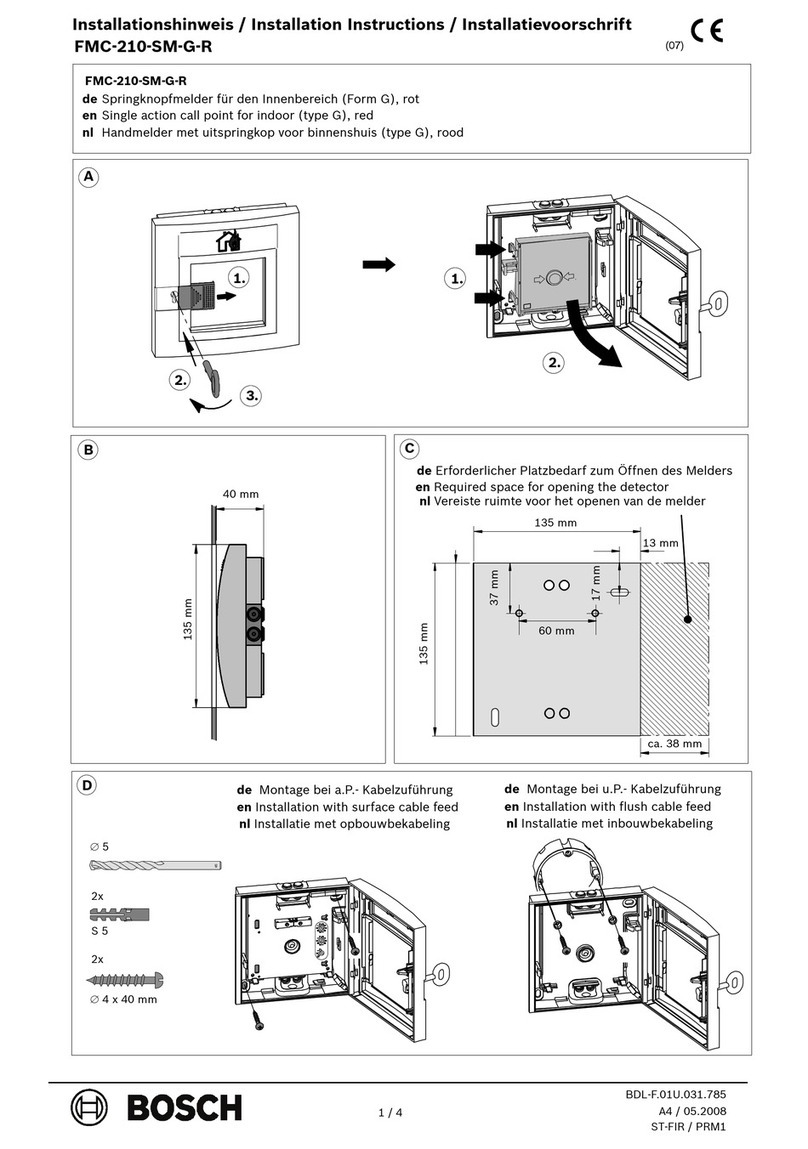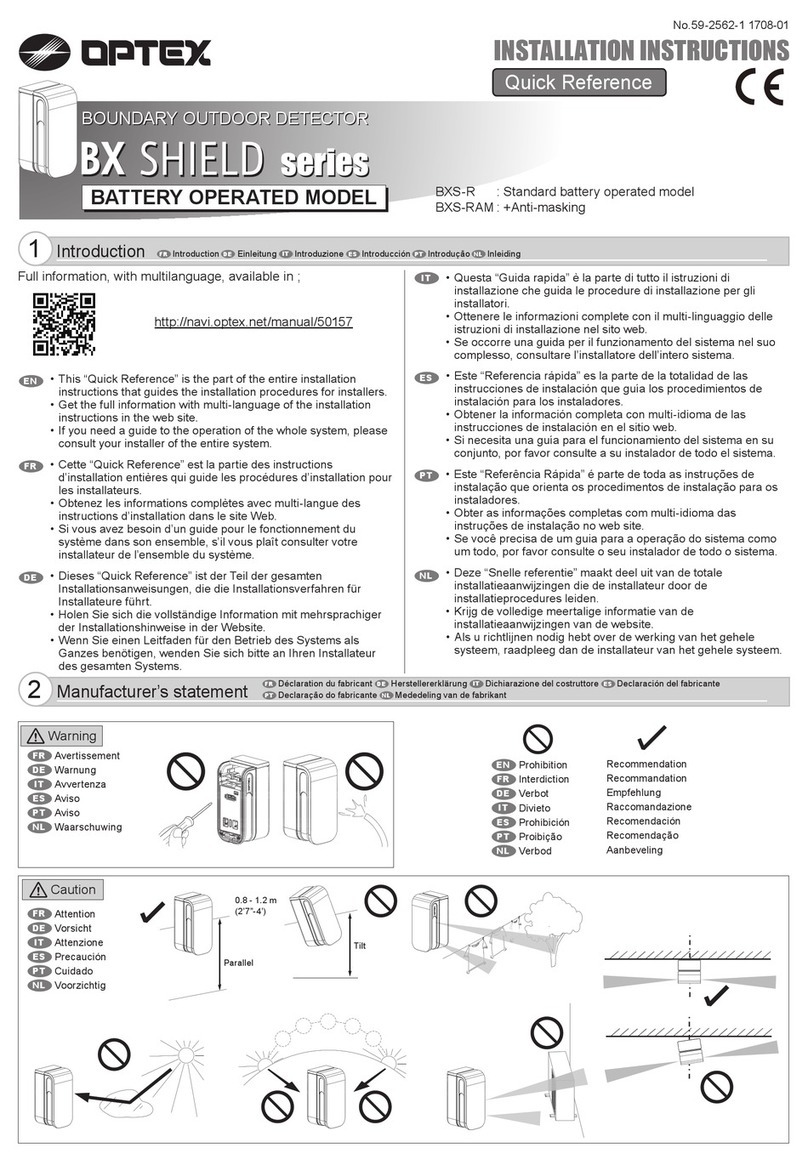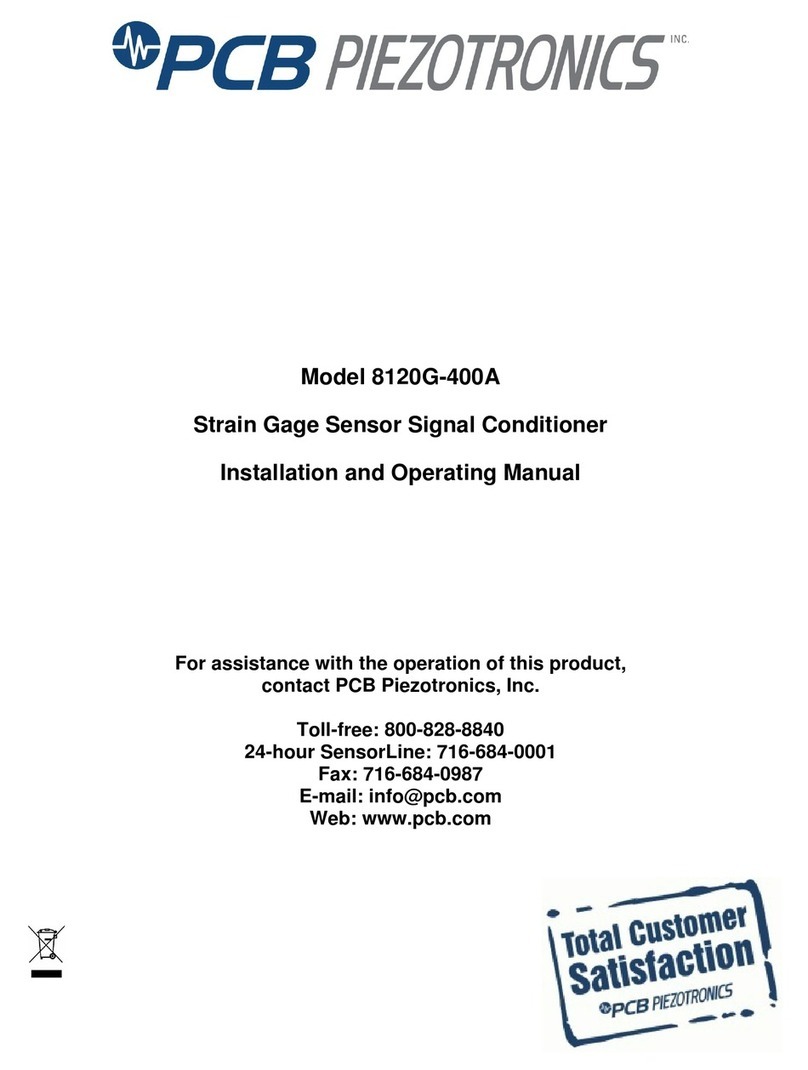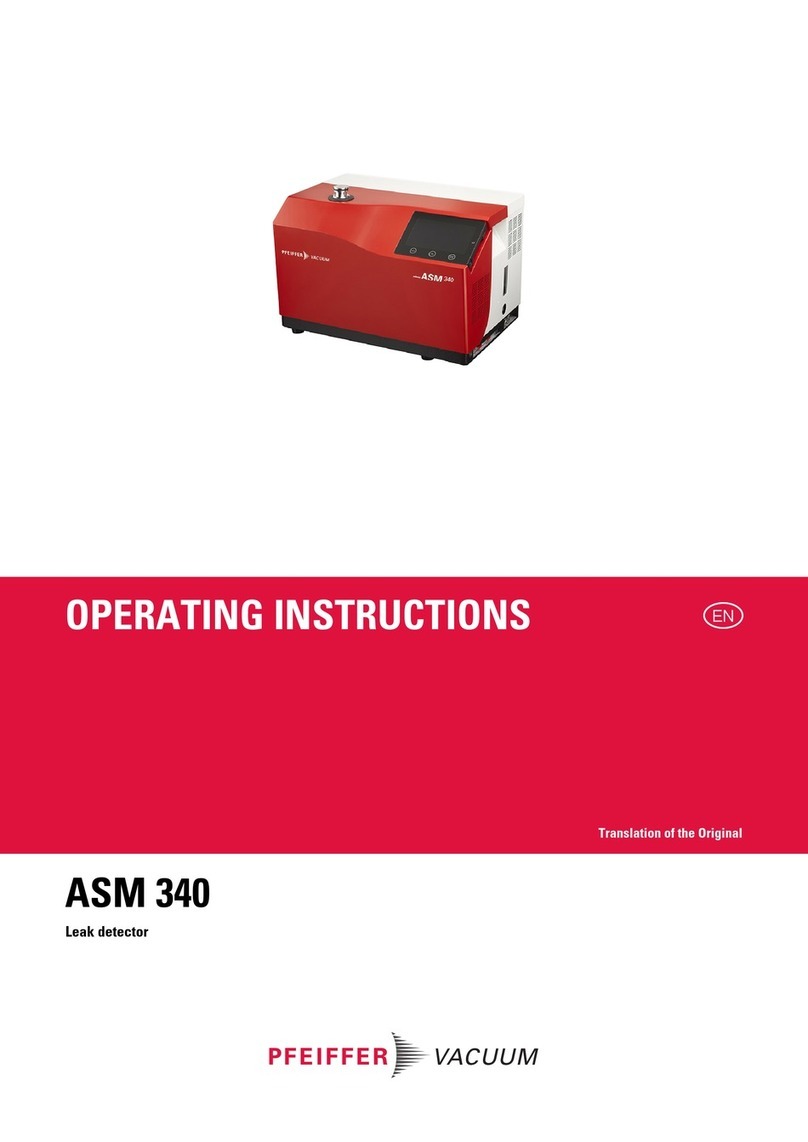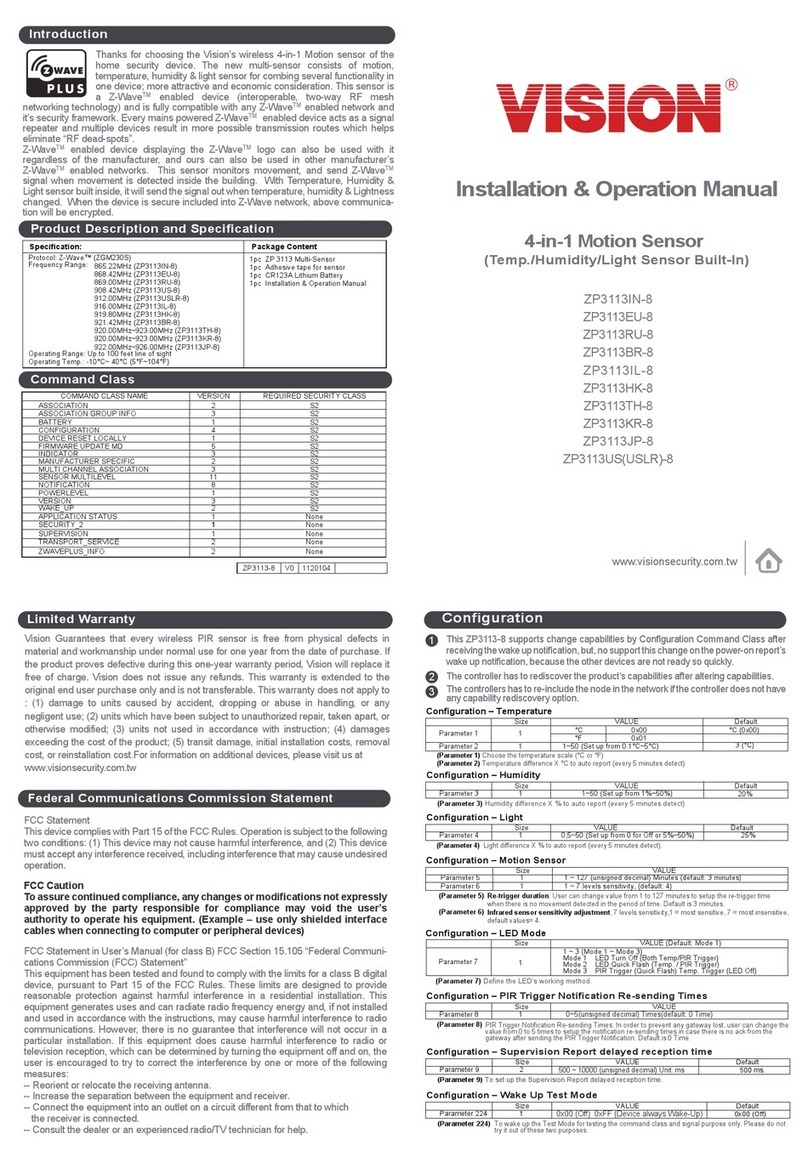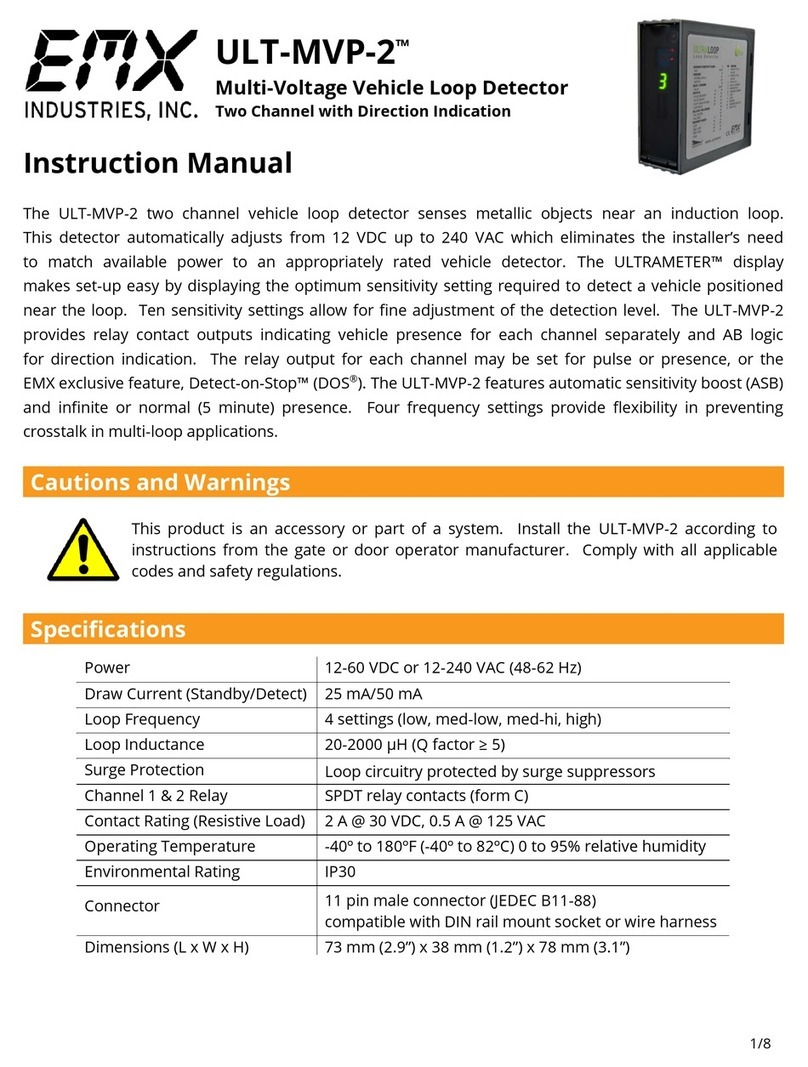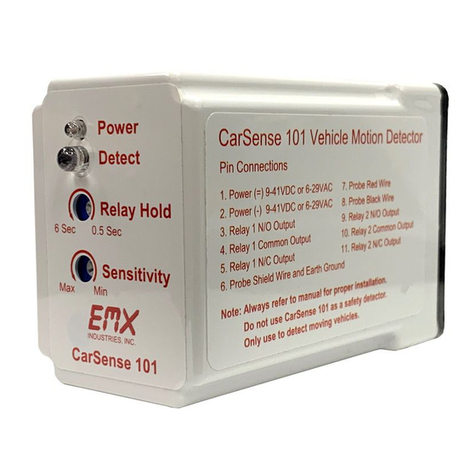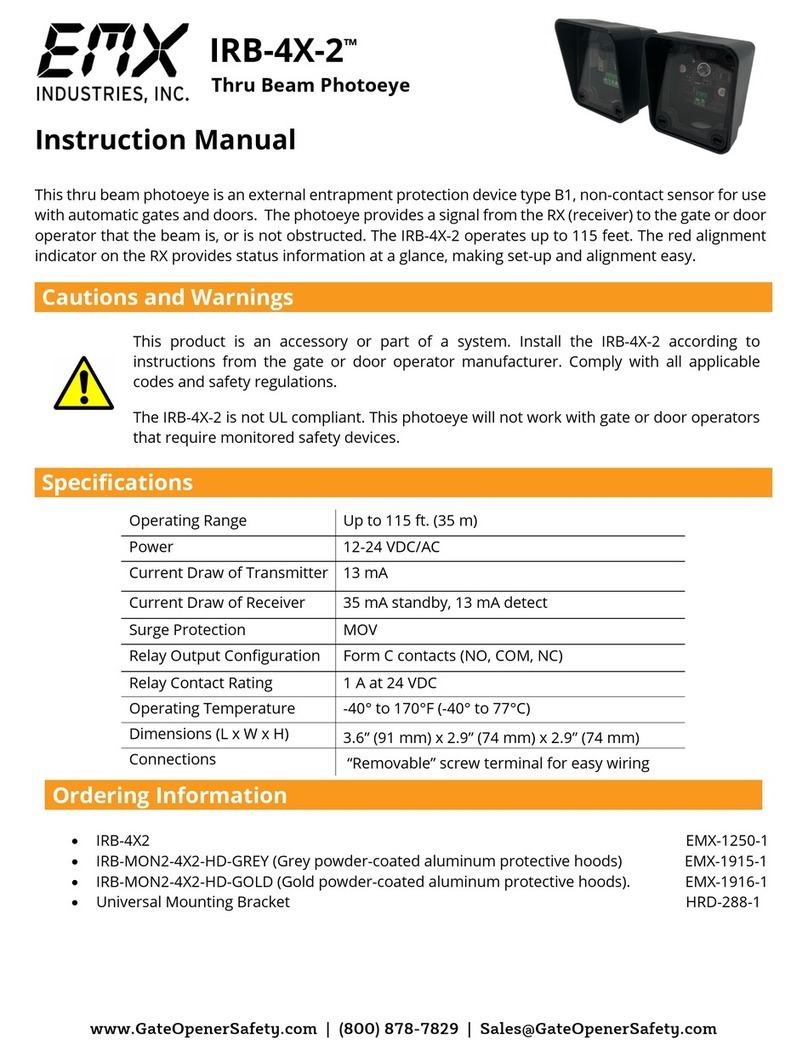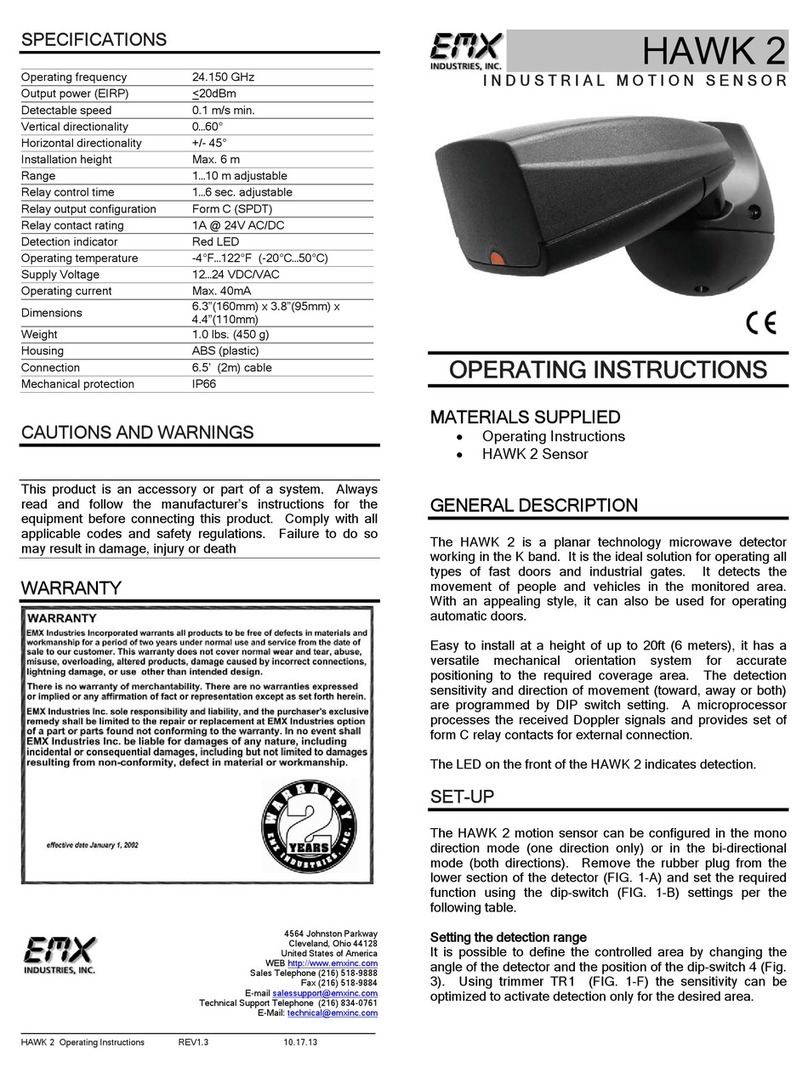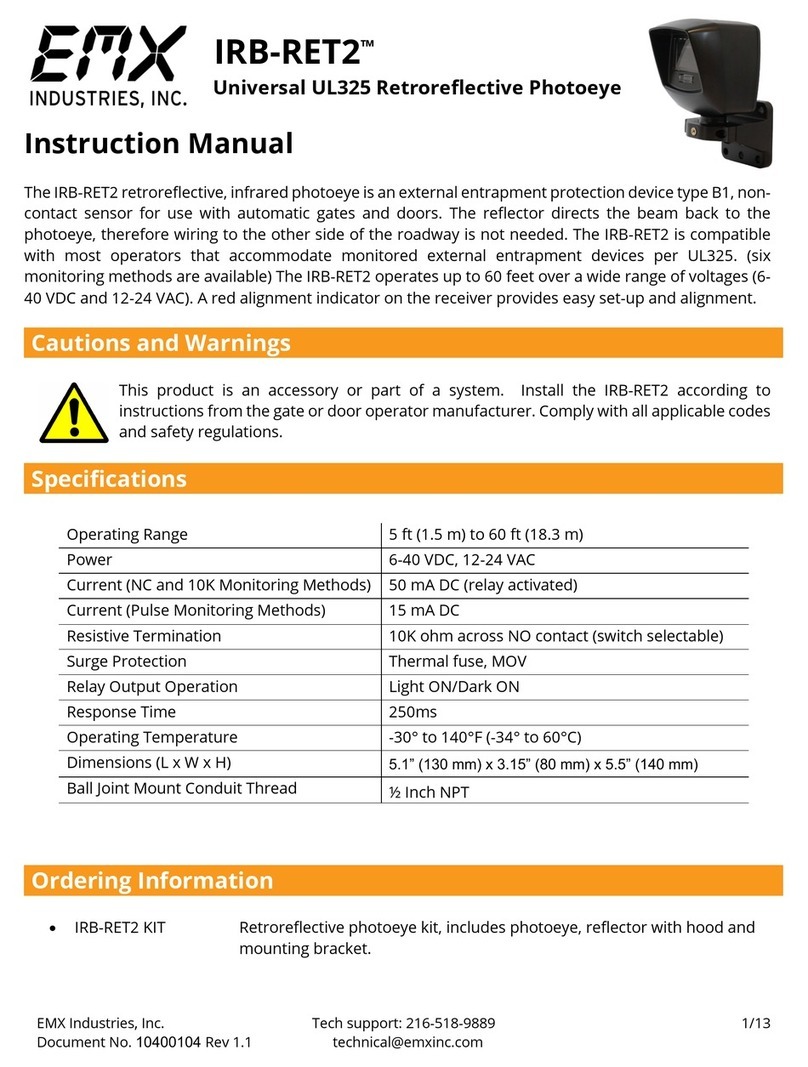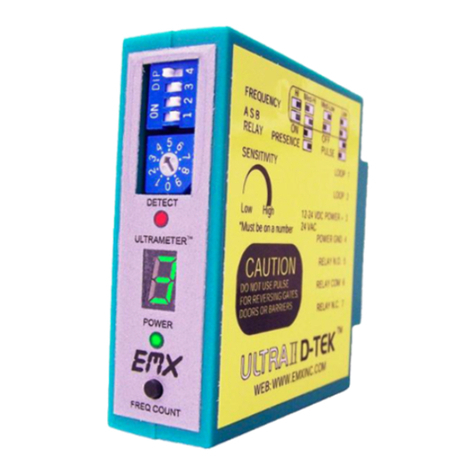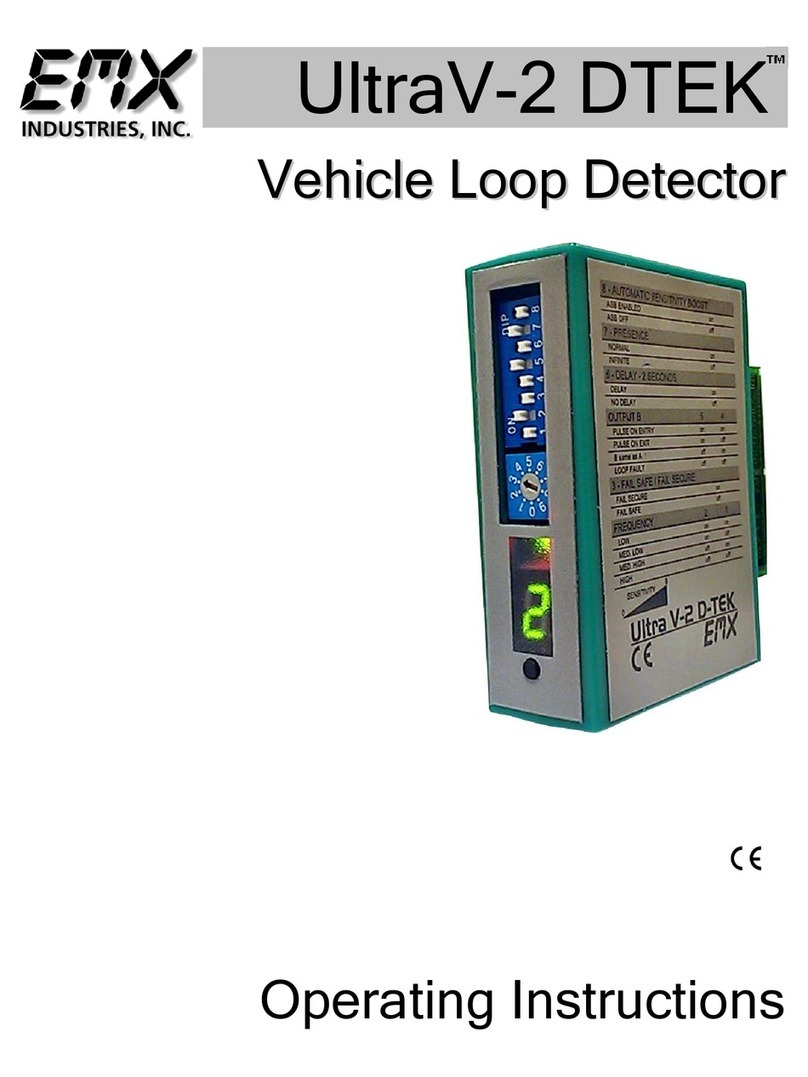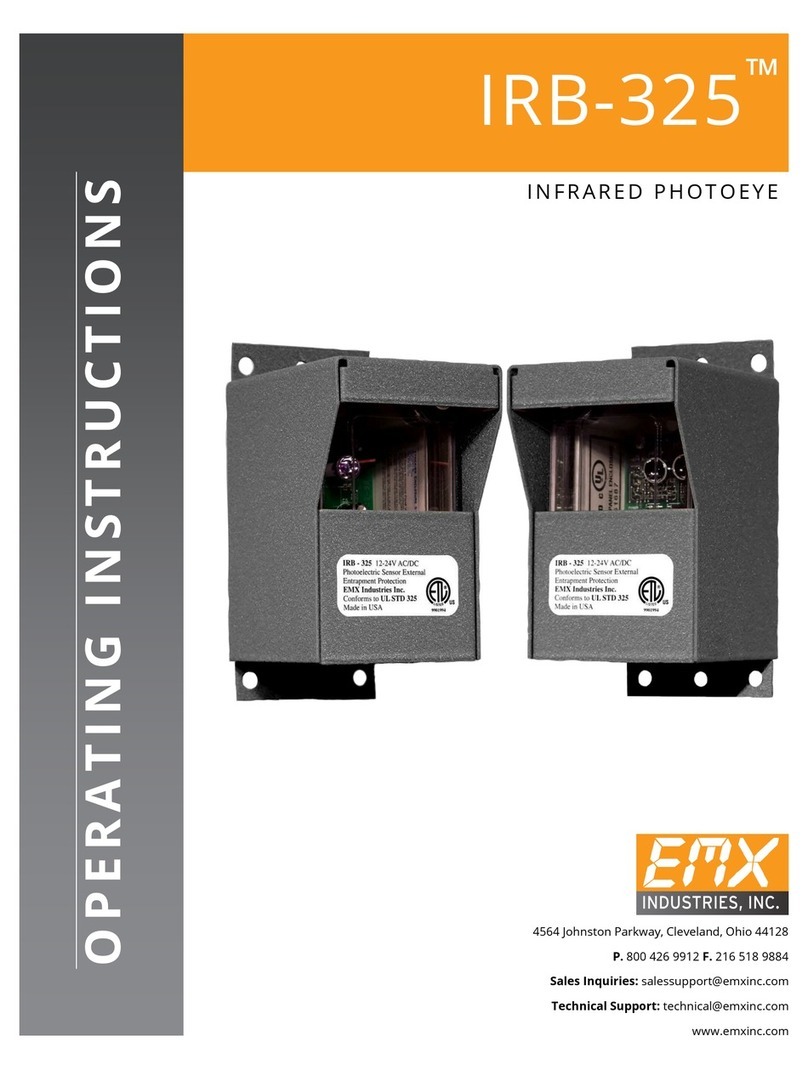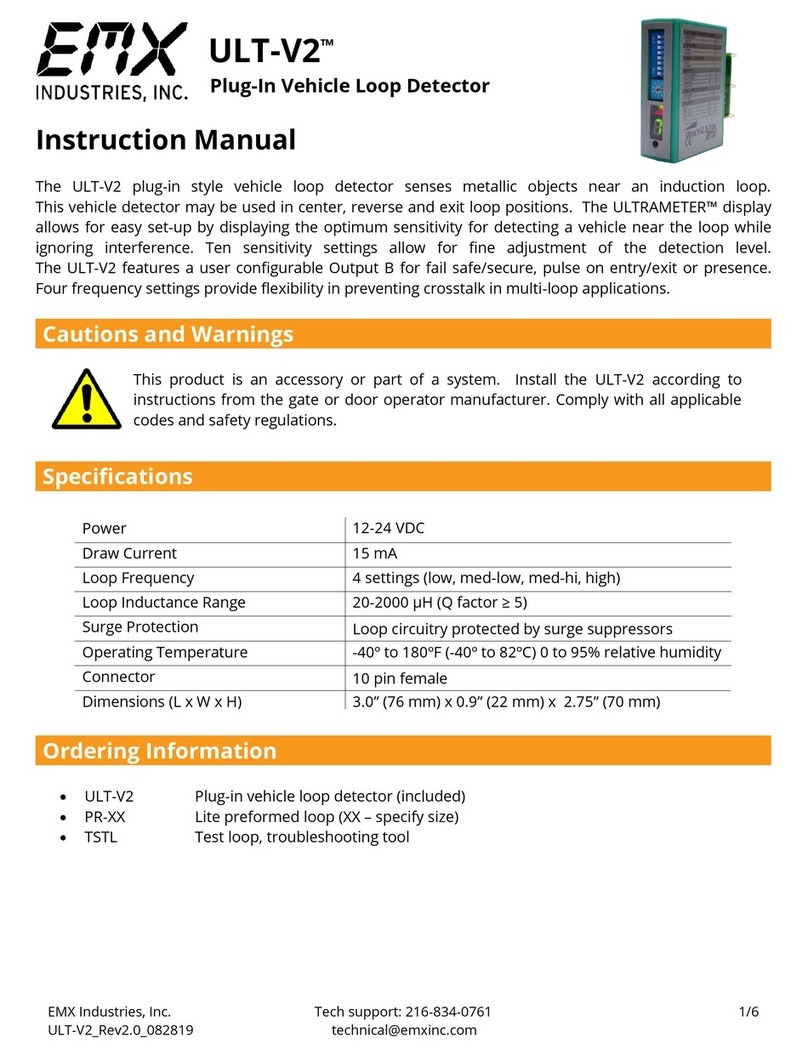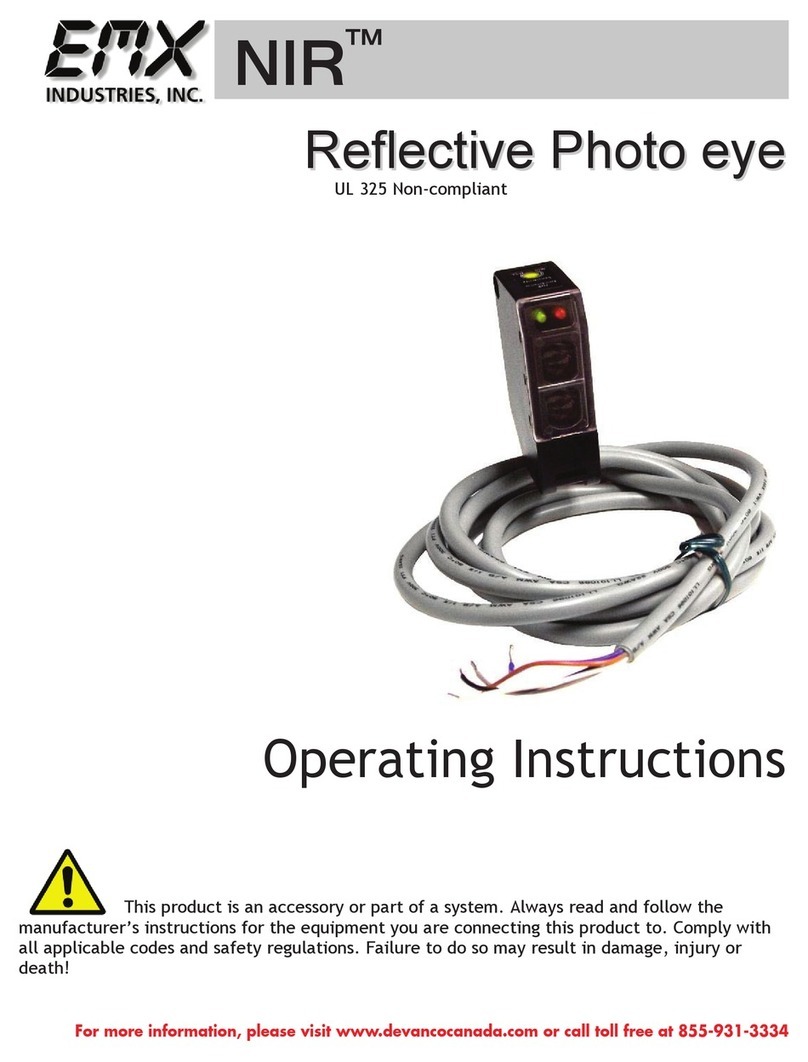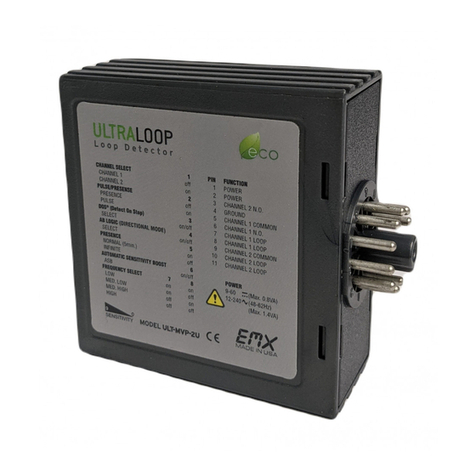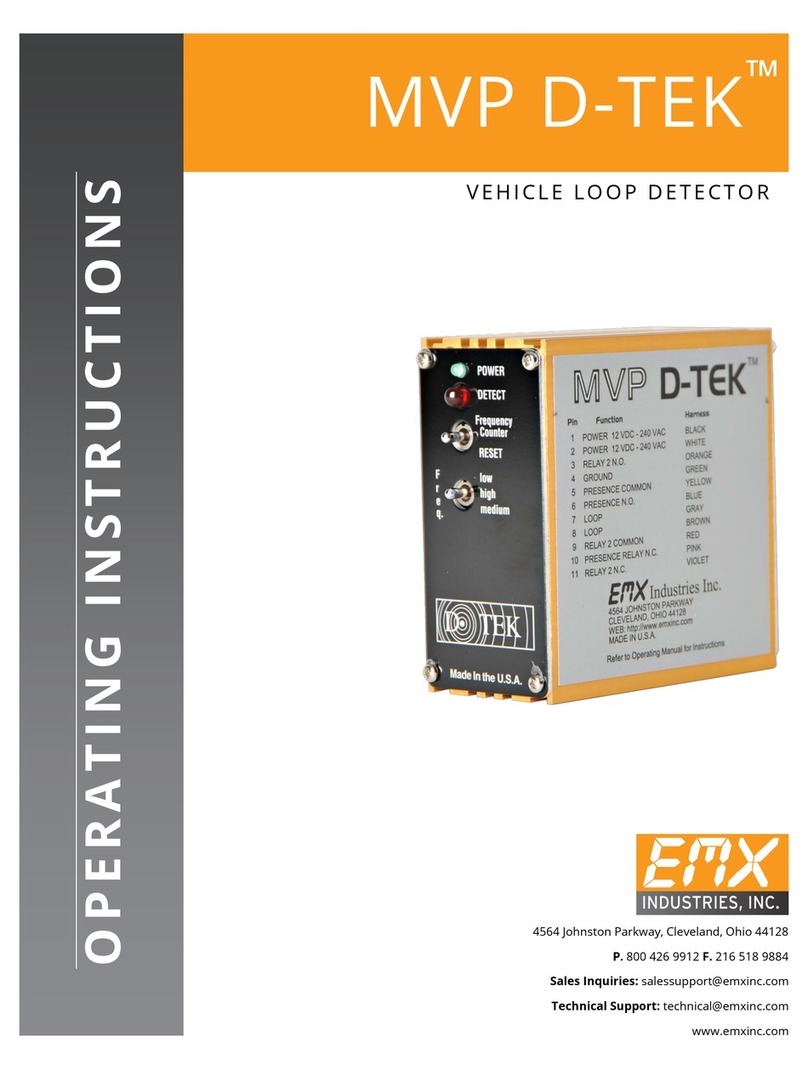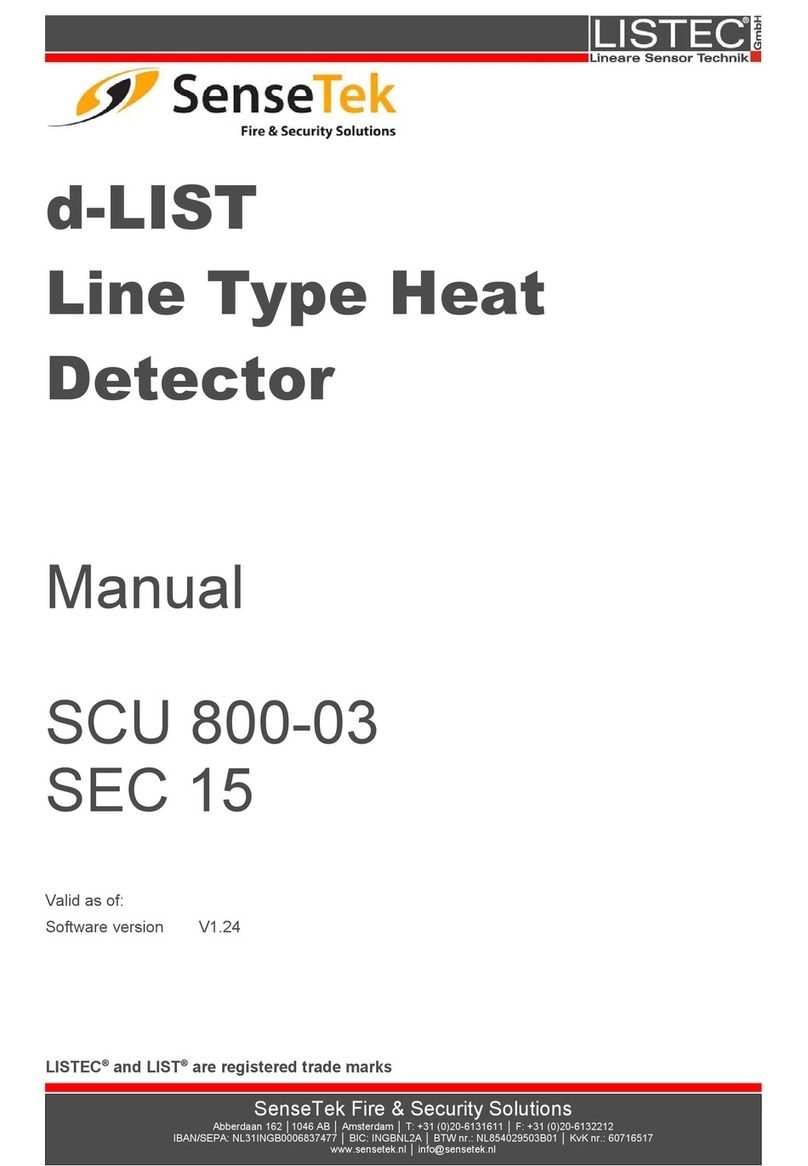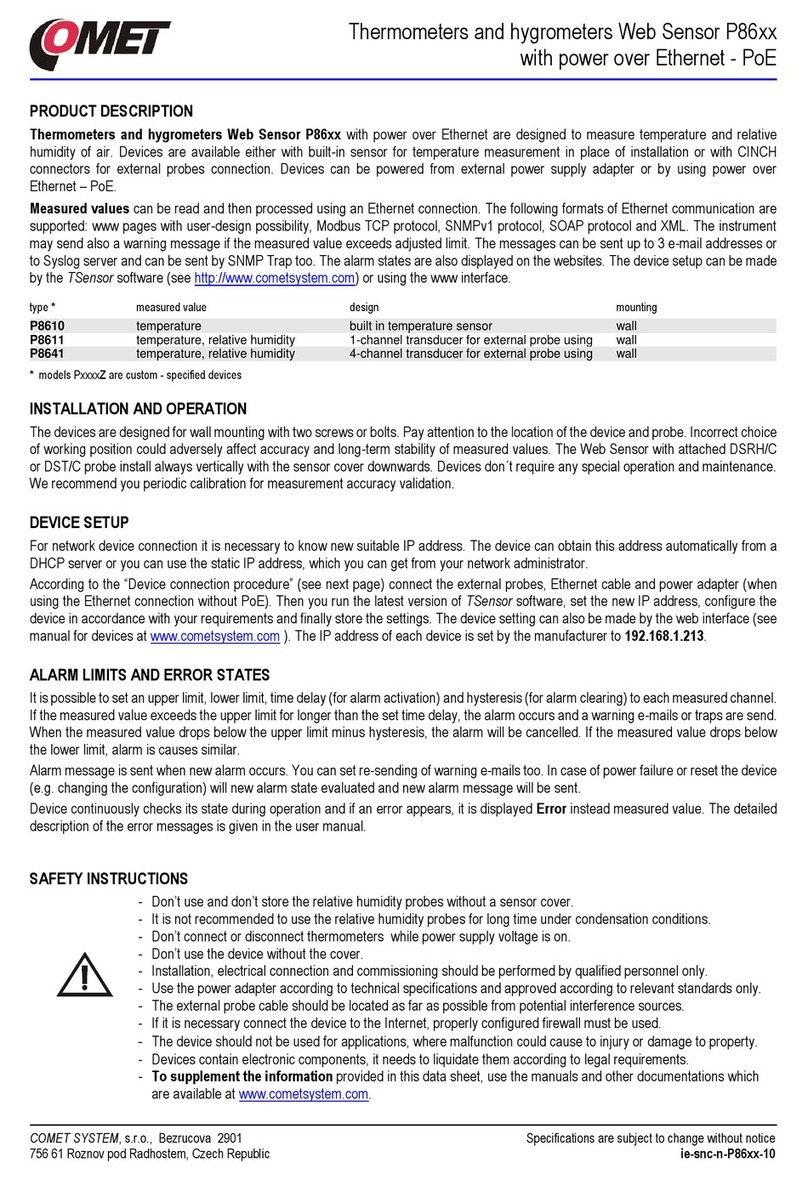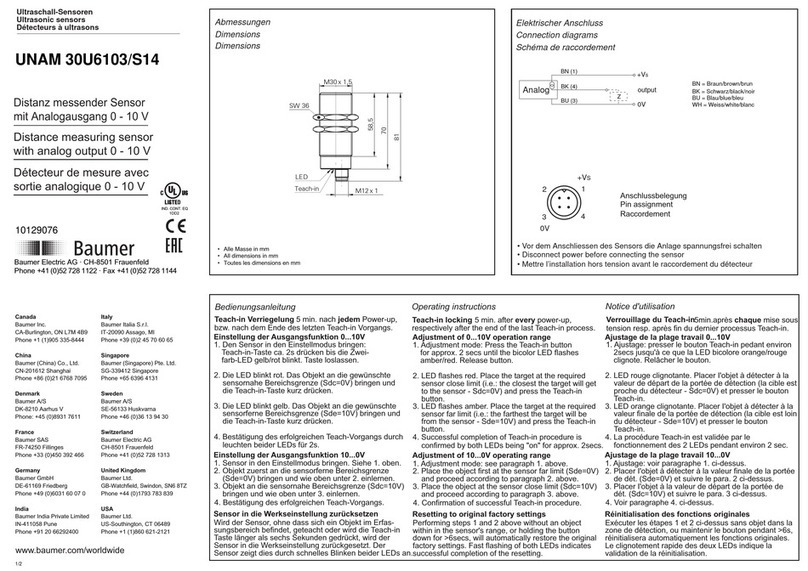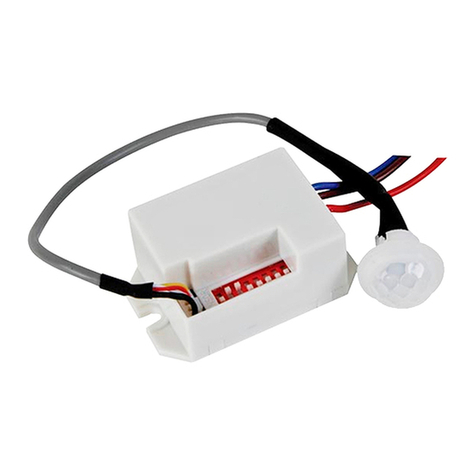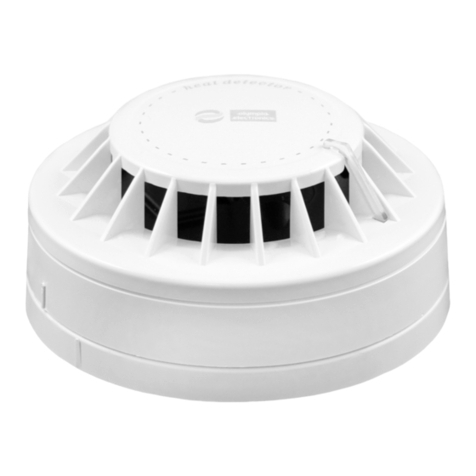
EMX Industries, Inc. Tech support: 216-518-9889 7/8
Document No.10310204 Rev 1.1 technical@emxinc.com
Troubleshooting
Symptom Possible Cause Solution
No detection Sensitivity set too low
Aluminum vehicle
(non-ferrous)
With a vehicle within the desired proximity,
observe the ULTRAMETERTM display to find
the minimum sensitivity required for
detection.
The LRS is detecting changes in Earth’s
magnetic field caused by ferrous metal.
Aluminum is non-ferrous and will not be
detected. Aluminum vehicles will need to be
much closer to the sensor for steel
components on vehicle to be detected.
Red LED on constantly
(stuck in detection mode)
or ULTRAMETERTM display
shows a value when no car
is present
Local environmental
change (example: high
voltage lines, power
plants, newly introduced
steel in detection field of
LRS sensor), movement
of sensor
Surface sealant is above
pavement
Electromagnetic noise or
dirty power
Recheck wiring. Make sure earth ground is
secure and connected to the shield wire on
the LRS-FP or DB. Recalibrate the sensor
using RESET button and see if problem
reoccurs. If the issue is still present,
the sensor may need to be moved or
adjust an axis setting (DIP switch 1, 2, or 3)
and push RESET button to undetect new
environmental change.
If surface sealant projects above the surface
of the pavement when a vehicle drives over
the sealant, it will push down on the sensor
and cause it to move. If the sensor moves, it
will be in permanent detection. Remove the
sealant and replace it with a hard epoxy
sealant that does not project above the
surface of the pavement. Recalibrate sensor
using RESET button.
Enabling the detection delay by turning on
DIP switch 4 might help alleviate the
problem. The system will now have a
2 second delay before activating after the
sensitivity threshold is met.
No green LED, red LED or
ULTRAMETERTM display on
No power from operator
or short circuit in sensor
1. Using a multimeter, check the voltage
across VIN1 and VIN2.
2. Unhook the LRS-FP or DB and see if
power returns to the LRS-C1 controller,
as indicated by the green LED on.
3. If power returns, replace the LRS-FP or
DB sensor.








